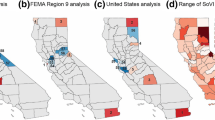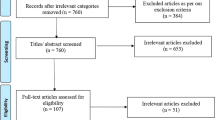Abstract
We consider stochastic growth models to represent population subject to catastrophes. We analyze the subject from different set ups considering or not spatial restrictions, whether dispersion is a good strategy to increase the population viability. We find out it strongly depends on the effect of a catastrophic event, the spatial constraints of the environment and the probability that each exposed individual survives when a disaster strikes.


Similar content being viewed by others
References
Artalejo, J.R., Economou, A., Lopez-Herrero, M.J.: Evaluating growth measures in an immigration process subject to binomial and geometric catastrophes. Math. Biosci. Eng. 4(4), 573–594 (2007)
Brockwell, P.J., Gani, J., Resnick, S.I.: Birth, immigration and catastrophe processes. Adv. Appl. Prob. 14, 709–731 (1982)
Cairns, B., Pollet, P.K.: Evaluating Persistence Times in Populations that are Subject to Local Catastrophes in MODSIM 2003 International Congress on Modelling and Simulation (ed. D.A. Post), Modelling and Simulation Society of Australia and New Zealand, 747752 (2003)
Fayolle, G., Malyshev, V.A., Menshikov, M.V.: Topics in the Constructive Theory of Countable Markov Chains. Cambridge University Press, Cambridge (1995)
Kapodistria, S., Phung-Duc, T., Resing, J.: Linear birth/immigration-death process with binomial catastrophes. Probab. Eng. Inf. Sci. 30(1), 79–111 (2016)
Lanchier, N.: Contact process with destruction of cubes and hyperplanes: forest fires versus tornadoes. J. Appl. Probab 48, 352–365 (2011)
Machado, F.P., Roldán-Correa, A., Schinazi, R.: Colonization and Collapse. arXiv:1510.02704 (2015)
Rudin, W.: Principles of Mathematical Analysis, 3rd edn. McGraw-Hill,Inc., New York (1976)
Schinazi, R.: Does random dispersion help survival? J. Stat. Phys. 159(1), 101–107 (2015)
Tucker, A.: Applied Combinatorics, 6th edn. Wiley, New York (2012)
Acknowledgments
The authors are thankful to Rinaldo Schinazi and Elcio Lebensztayn for helpful discussions about the model. V. Junior and A. Roldán wish to thank the Instituto de Matemática e Estatística of Universidade de São Paulo for the warm hospitality during their scientific visits to that institute. The authors are thankful for the two anonymous referees for a careful reading and many suggestions and corrections that greatly helped to improve the paper. Valdivino Vargas was supported by PNPD-CAPES (1536114), Fábio Machado by CNPq (310829/2014-3) and Fapesp (09/52379-8) and Alejandro Roldan by CNPq (141046/2013-9).
Author information
Authors and Affiliations
Corresponding author
Rights and permissions
About this article
Cite this article
Junior, V.V., Machado, F.P. & Roldán-Correa, A. Dispersion as a Survival Strategy. J Stat Phys 164, 937–951 (2016). https://doi.org/10.1007/s10955-016-1571-3
Received:
Accepted:
Published:
Issue Date:
DOI: https://doi.org/10.1007/s10955-016-1571-3




